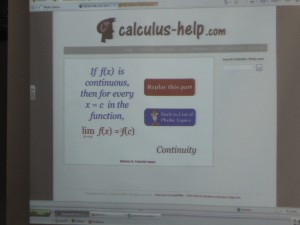Blog Archives
Data-Driven Decision Making–High School Math Elective
 Last year, the Athena High School Math Department introduced a new and exciting elective titled “Data-Driven Decision Making.” This elective, now in its second year, combines statistics and practical application of real life decisions. The course description reads:
Last year, the Athena High School Math Department introduced a new and exciting elective titled “Data-Driven Decision Making.” This elective, now in its second year, combines statistics and practical application of real life decisions. The course description reads:
“Students will study mathematical topics associated with decision making through the collection and interpretation of relevant data. This course is designed to improve personal and professional decisions by presenting a practical framework that can be used to make better and smarter choices. Students will have the opportunity to perform a decision making analysis incorporating several statistical methods and techniques.”
 The student objectives are: to improve their personal and professional decision making, learn to analyze data and use methods of statistical inference, prepare for college level mathematics, and expand their experience with technology and giving presentations. The “textbook” for the course is Hammond, Keeney, and Raiffa’s (1999) Smart choices: A practical guide to making better decisions. The course uses the decision framework presented in this book, along with some additions from Mr. Ingerick and I. Some sample student project problem statements include the following:
The student objectives are: to improve their personal and professional decision making, learn to analyze data and use methods of statistical inference, prepare for college level mathematics, and expand their experience with technology and giving presentations. The “textbook” for the course is Hammond, Keeney, and Raiffa’s (1999) Smart choices: A practical guide to making better decisions. The course uses the decision framework presented in this book, along with some additions from Mr. Ingerick and I. Some sample student project problem statements include the following:
- What should I do after high school?
- What is the best way to save money for college?
- I need transportation for work.
- Where should I live next year?
The decision making framework used for this class is shown below. I believe that this is one of the best high school electives that you could offer to students. Please leave any comments below.
Athena is SMART
Many of our Athena math teachers have recently upgraded their classrooms with projectors and SMART boards. Although sometimes tempting to use these tools as an “expensive overhead,” our teachers chose to engage students with a variety of techniques.
Mr. Ingerick had his students teach the class on identity and squaring functions in his Pre-Calculus course. Each group of students discussed the topics at their desks, and presented them on the SMART board.
Mrs. Benz chose to use her projector by showing a pre-teach video clip from the Internet in her AP Calculus class. Her students were engaged by watching a math expert from calculus-help.com. Mrs. Benz explained that she likes this website because it offers a variety of informative and humorous videos on many aspects of Calculus.
Mr. Mock and Ms. Ruggeri hooked in their Integrated Algebra class with many interactive SMART board games and applications. This team of teachers had multiple activities throughout their class. At one point in the class, students came to the front of the room to work on a math basketball SMART board game that reinforced the ideas of solving equations. At other moments in the class, an interactive graphing calculator was projected to assist students in mastering this important tool. Both teachers were able to increase instructional engagement by utilizing technology and fun into their classroom.
Practical Strategy: Advocate for technology in your classroom and make a committment to use it often. Even the smallest technology activity can help to keep your kids interested in the content that you are delivering.








 My name is Andy Maillet and I am an instructional math coach at Athena Middle and High Schools.
My name is Andy Maillet and I am an instructional math coach at Athena Middle and High Schools.



